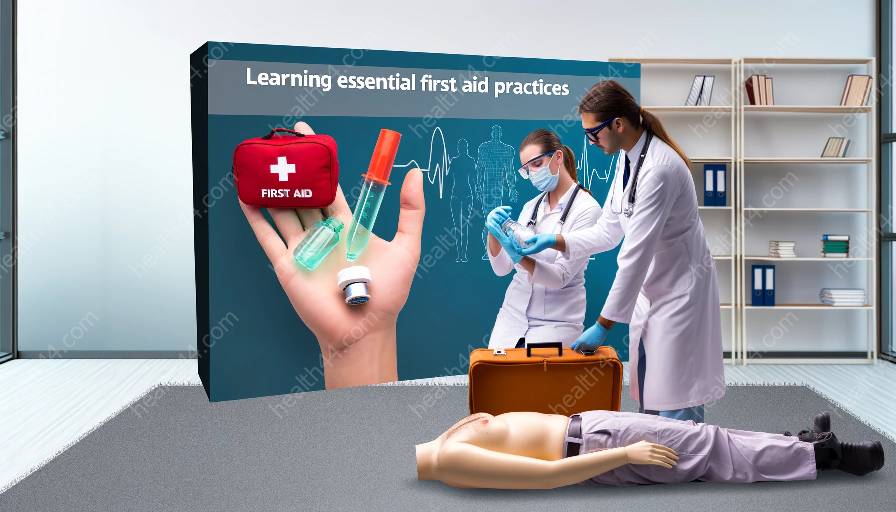First aid is the immediate care given to someone who is injured or suddenly becomes ill before the arrival of professional medical help. It aims to preserve life, prevent the condition from worsening, and promote recovery. Through health education and medical training, individuals can acquire the knowledge and skills needed to provide effective first aid, which is a crucial aspect of maintaining public health.
Understanding the Importance of First Aid
Being familiar with first aid practices can make a significant difference in emergency situations. Whether it's a minor injury at home or a major accident in the community, having the knowledge and ability to administer first aid can save lives and alleviate suffering, demonstrating a proactive approach to health and safety. It's essential for individuals to recognize the value of first aid not only in terms of responding to emergencies but also in promoting overall well-being.
Health Education and First Aid
Health education plays a pivotal role in empowering people with the information and skills necessary to respond effectively in emergency situations. By integrating first aid training into health education programs, individuals can develop a solid understanding of basic medical procedures, emergency response protocols, and injury prevention techniques. Health educators can emphasize the importance of being prepared for unforeseen emergencies and how first aid knowledge contributes to a healthier and safer community.
Medical Training and First Aid
Within the realm of medical training, first aid serves as the foundation for acquiring essential lifesaving skills. Medical professionals, including doctors, nurses, and paramedics, undergo rigorous training to become proficient in providing immediate care to those in need. Incorporating first aid teachings in medical training curricula reinforces the significance of prompt and competent responses to critical situations, instilling a sense of responsibility and preparedness among healthcare professionals.
Key Aspects of First Aid
When it comes to learning about first aid, several vital aspects should be highlighted to ensure comprehensive understanding and practical application.
Basic First Aid Procedures
Basic first aid procedures cover techniques such as cardiopulmonary resuscitation (CPR), wound care, burn treatment, fracture stabilization, and choking management. By mastering these fundamental skills, individuals are better equipped to provide immediate assistance in various emergency scenarios, demonstrating competency in administering essential care.
Educational Tools and Resources
Utilizing educational tools, such as first aid manuals, instructional videos, and online resources, can enhance the learning experience and serve as valuable references in times of need. Access to reliable information and training materials is essential for promoting continuous education and proficiency in first aid practices.
Community Involvement and Awareness
Engaging the community in first aid awareness campaigns and initiatives can foster a culture of preparedness and responsiveness. By organizing workshops, seminars, and demonstrations, individuals can become proactive participants in promoting first aid knowledge and skills within their communities, bolstering the overall health and safety infrastructure.
The Intersection of Health and First Aid
The practice of first aid aligns seamlessly with the broader concept of health, serving as a fundamental component of safeguarding well-being. By integrating first aid principles into health promotion efforts, individuals can actively contribute to the creation of healthier and safer environments.
First Aid as a Preventive Measure
Beyond its immediate intervention in emergencies, first aid reinforces the importance of prevention and risk mitigation. Teaching individuals about injury prevention, hazard recognition, and safety protocols fosters a proactive mindset, emphasizing the notion that prevention is key to maintaining good health.
Public Health Preparedness
From a public health perspective, promoting widespread first aid knowledge and skills contributes to community resilience and disaster preparedness. By empowering individuals to respond effectively to emergencies, the overall public health infrastructure becomes more robust, enhancing the capacity to handle crises and minimize the impact of adverse events.
Conclusion
By emphasizing the interconnectedness of first aid, health education, medical training, and broader health-related aspects, individuals can gain a holistic understanding of the value of proactive and knowledgeable responses to emergencies. This comprehensive approach enables individuals to not only address immediate health concerns effectively but also actively contribute to creating safer and healthier environments for themselves and their communities.

















